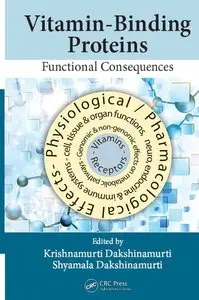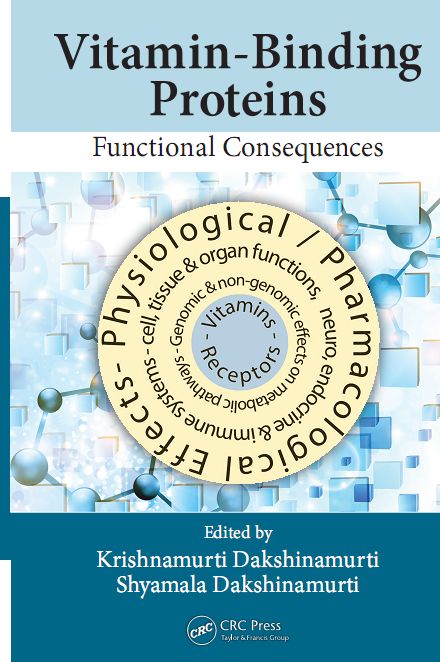Vitamin-Binding Proteins: Functional Consequences by Krishnamurti Dakshinamurti and Shyamala Dakshinamurti
English | 2013 | ISBN: 1439880166 | 300 pages | PDF | 20 MB
English | 2013 | ISBN: 1439880166 | 300 pages | PDF | 20 MB
Diverse in chemical nature, water soluble and lipid soluble vitamins are essential micronutrients that react with specific protein entities and are transported to sites for participation in intracellular events, both at the genomic and non-genomic levels.
Thus, metabolic pathways and intracellular signaling are influenced by vitamins or their derivatives through vitamin binding to specific proteins. Vitamin-Binding Proteins: Functional Consequences examines the function of various vitamins based on this binding, as well as their role as antioxidants, leading to effects on intracellular mechanisms. This book explores the resulting functional consequences at the level of cells, tissues, and organs as well as the neurological, endocrine, and immune systems.
The text addresses the effects that lead to both normal physiological function and pharmacological activity with significant therapeutic potential in a wide spectrum of disease processes. Leading experts discuss various vitamins including the function of retinoids in development, immunity, and obesity; the role of vitamin D in the immune system, infectious processes, and cardiovascular disease; and the effects of vitamins E, C, and K on the vascular system.
Chapters cover the therapeutic potential of the vitamin B6 vitamer pyridoxamine and the lipid-soluble B1analogue benfotiamine. They also describe various functions of biotin as well as gene transcriptional regulation through biotin and biotin-binding proteins. The text addresses folate receptor-mediated therapeutics, vitamin B12 derivatives in tumor targeting, and implication of ascorbic acid in different disorders. Expounding newer areas of vitamin function, this book explores the interface of physiological vitamin function and pharmacological vitamin action, offering a broad perspective of possible vitamin binding therapeutics.



